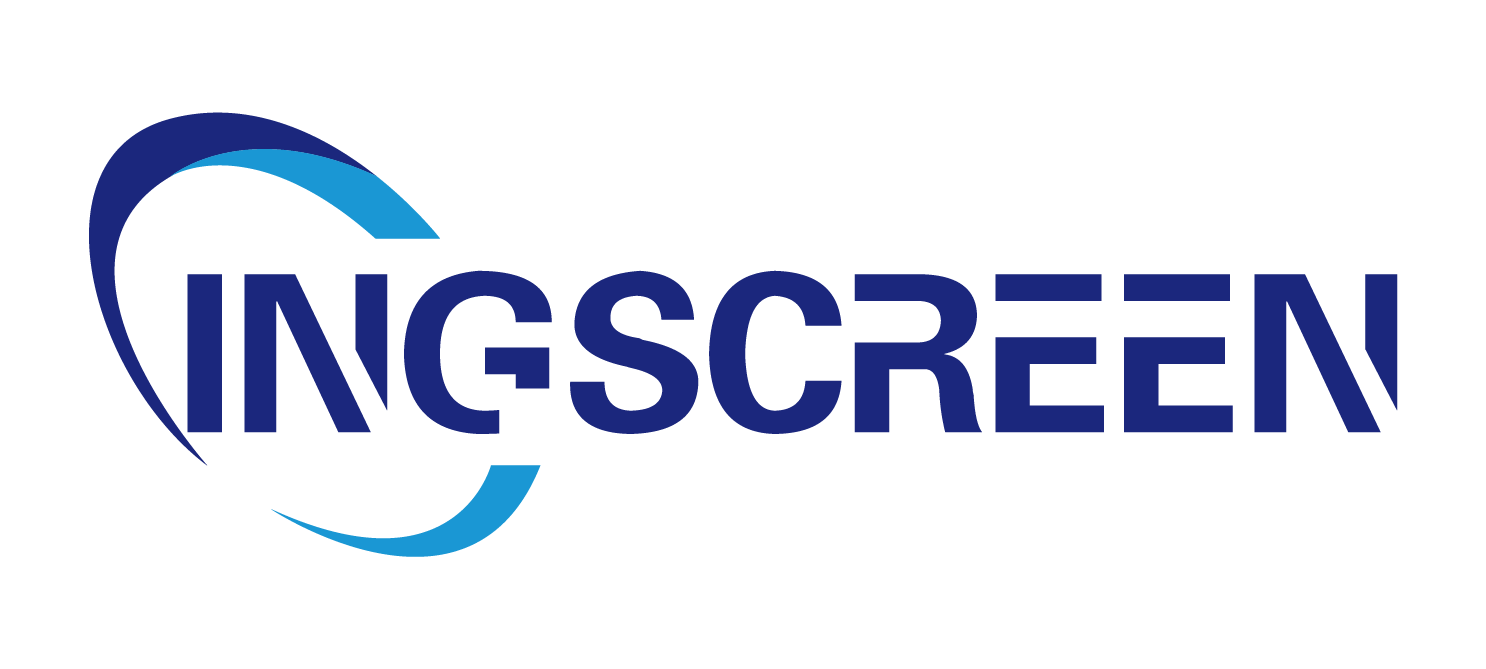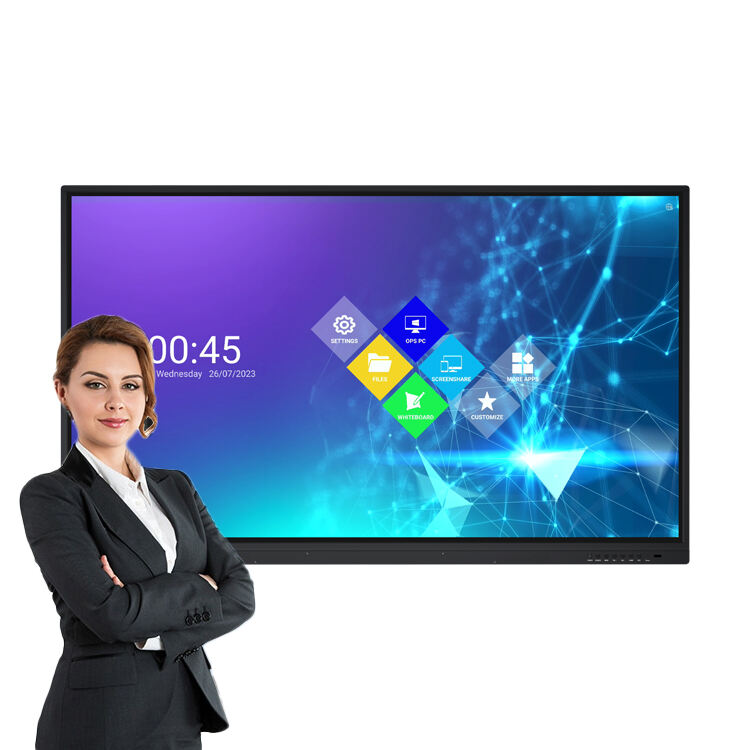Why Are Interactive Flat Panels Revolutionizing Education?
Interactive flat panels (IFPs) have emerged as a game-changing tool in modern classrooms, transforming how teachers teach and students learn. These large, touch-sensitive displays combine the functionality of a whiteboard, projector, and digital device into one sleek system, offering interactive features that engage students, simplify lesson delivery, and bridge the gap between traditional and digital learning. From elementary schools to universities, interactive flat panels are revolutionizing education by making lessons more dynamic, accessible, and inclusive. This guide explores why these panels are reshaping classrooms, focusing on their impact on engagement, collaboration, accessibility, and teaching efficiency.
What Are Interactive Flat Panels?
Interactive flat panels are large-format displays—typically ranging from 55 to 86 inches—equipped with touchscreen technology, high-definition visuals, and built-in software. Unlike traditional whiteboards or projectors, which require markers, bulbs, or constant alignment, IFPs connect to the internet, laptops, or other devices, allowing teachers to display digital content, write notes, and interact with lessons directly on the screen.
Modern interactive flat panels often include features like multi-touch capability (supporting multiple users at once), built-in speakers, cameras for video calls, and compatibility with educational apps and software. They are designed to be durable, easy to clean, and user-friendly, making them suitable for daily use in busy classrooms. Their versatility—acting as a whiteboard, presentation tool, and interactive learning hub—makes them a central piece of technology in modern education.
Boosting Student Engagement
One of the biggest ways interactive flat panels revolutionize education is by increasing student engagement. Traditional lessons that rely on lectures or static textbooks can leave students passive, but IFPs turn learning into an active experience. Here’s how:
Interactive Content and Multimedia Integration
Interactive flat panels allow teachers to incorporate a wide range of multimedia into lessons, from videos and animations to interactive quizzes and virtual simulations. For example, a science teacher can display a 3D model of the solar system, letting students “touch” and rotate planets to explore their features. A history teacher can show a documentary clip and pause to highlight key moments or add notes directly on the screen.
This mix of visuals, movement, and interactivity captures students’ attention, especially in an era where digital natives are accustomed to engaging with technology. Studies show that students are more likely to remember information presented through multimedia, as it stimulates multiple senses and makes abstract concepts more concrete.
Hands-On Learning Opportunities
With multi-touch technology, interactive flat panels let students participate directly in lessons. Instead of raising hands to answer questions, students can come to the board to solve math problems, drag and drop elements in a language exercise, or label diagrams in a biology class. This hands-on involvement makes learning more personal and memorable, as students take ownership of their understanding.
For younger students, interactive games on the panel—like matching words to pictures or solving puzzles—turn learning into play, reducing anxiety and making lessons more enjoyable. Older students benefit from collaborative activities, such as group presentations where each member contributes to the panel’s content.
Instant Feedback and Participation
Interactive flat panels often integrate with student response systems or apps, allowing teachers to create quick quizzes or polls. Students can answer using their own devices or by touching the panel, and results are displayed instantly. This gives teachers real-time insight into which concepts students understand and which need more review, enabling them to adjust lessons on the fly.

Instant feedback keeps students engaged, as they stay invested in seeing their answers and learning from mistakes immediately. It also encourages shy or quiet students to participate, as they can contribute without speaking up in front of the class.
Enhancing Collaboration and Communication
Interactive flat panels break down barriers to collaboration, making it easier for students to work together and for teachers to connect with their classes.
Group Work and Team Projects
IFPs serve as a central hub for group activities. Students can collaborate on presentations, brainstorm ideas, or edit documents directly on the screen, with each member adding input using the touch function. This promotes teamwork and communication skills, as students learn to share ideas, resolve conflicts, and build on each other’s contributions.
For example, in a literature class, groups can analyze a poem by annotating lines on the panel, adding their interpretations, and discussing differences in real time. In a coding class, students can work together to debug a program displayed on the screen, taking turns to make changes and test solutions.
Teacher-Student Interaction
Interactive flat panels make it easier for teachers to connect with individual students. Instead of standing at the front of the class, teachers can move around while controlling the panel, engaging with students one-on-one while the rest of the class follows along on the screen. Teachers can also use the panel to highlight a student’s work, praise their contribution, or gently correct mistakes in a way that feels supportive rather than critical.
This increased interaction builds rapport between teachers and students, creating a more positive classroom environment where students feel comfortable asking questions and taking risks.
Remote and Hybrid Learning Support
In an era where remote or hybrid learning is common, interactive flat panels bridge the gap between in-person and online students. Teachers can connect with remote students via video calls, displaying the panel’s content on their screens so everyone follows the same lesson. Remote students can even interact with the panel through shared software, allowing them to participate in activities as if they were in the classroom.
This integration ensures that no student is left behind, whether they’re learning from home or in person, making education more inclusive and flexible.
Making Education More Accessible
Interactive flat panels address diverse learning needs, making education more accessible for all students, regardless of their abilities or learning styles.
Support for Different Learning Styles
Students learn in different ways—some are visual learners, others auditory or kinesthetic. Interactive flat panels cater to all these styles by combining visuals (videos, diagrams), audio (lectures, podcasts), and hands-on activities (touch interactions). For example:
- Visual learners benefit from colorful charts and animations.
- Auditory learners can listen to audio clips or teacher explanations while following along on the screen.
- Kinesthetic learners engage through touch-based activities and movement.
This versatility ensures that more students can access and understand the material, reducing frustration and improving outcomes.
Accessibility Features for Special Needs
Interactive flat panels often include features that support students with special needs. For example, high-contrast displays and adjustable text sizes help students with visual impairments. Touchscreen controls can be easier to use than traditional tools for students with motor skill challenges. Additionally, built-in text-to-speech software can read aloud content, aiding students with reading difficulties or dyslexia.
These features create a more inclusive classroom where all students have equal opportunities to participate and succeed.
Simplified Access to Educational Resources
Interactive flat panels connect to the internet and educational platforms, giving teachers and students instant access to a wealth of resources. Teachers can pull up online articles, educational videos, or virtual field trips in seconds, enriching lessons with up-to-date information. Students can access these resources later through shared links, allowing them to review material at their own pace.
This easy access reduces reliance on textbooks and physical materials, making education more flexible and adaptable to changing curriculum needs.
Streamlining Teaching and Classroom Management
Interactive flat panels save teachers time and reduce stress by simplifying lesson preparation, delivery, and classroom management.
Easy Lesson Preparation and Storage
Teachers can create and save lessons on interactive flat panels, storing them in the cloud or on the device for future use. This eliminates the need to rewrite notes on a whiteboard or print handouts, saving time and reducing waste. Lessons can be easily edited or updated, allowing teachers to refine their content based on student feedback or new information.
Many IFPs also come with pre-built lesson templates or access to educational libraries, giving teachers a starting point for creating engaging content, especially for those new to using technology in the classroom.
Efficient Classroom Transitions
Switching between activities is faster with interactive flat panels. Teachers can quickly move from a video to a quiz to a group discussion with a few taps, keeping lessons flowing smoothly and reducing downtime. This efficiency is especially valuable in classes with short attention spans, like elementary school, where keeping momentum is key to maintaining engagement.
Reduced Technical Issues
Unlike projectors, which often suffer from blurry images, alignment problems, or bulb failures, interactive flat panels offer consistent, high-quality displays. They are plug-and-play devices that require minimal setup, reducing the technical issues that can disrupt lessons. This reliability gives teachers peace of mind, allowing them to focus on teaching rather than troubleshooting technology.
FAQ
How do interactive flat panels differ from smartboards?
Interactive flat panels are more modern than traditional smartboards. They have built-in displays (no need for a projector), better touch sensitivity, and often include more features like cameras and speakers. They are also sleeker, more durable, and require less maintenance than smartboards, which rely on projectors and can suffer from image quality issues.
Are interactive flat panels suitable for all age groups?
Yes. Younger students benefit from touch-based games and visuals, while older students use them for collaborative projects and complex simulations. The versatility of IFPs makes them adaptable to elementary, middle, high school, and even university classrooms.
Do interactive flat panels require special training for teachers?
While basic use is intuitive, some training can help teachers maximize the panels’ features. Most manufacturers offer tutorials or workshops, and many schools provide professional development sessions. With practice, teachers quickly learn to create interactive lessons and manage the technology effectively.
Are interactive flat panels expensive?
Interactive flat panels have a higher upfront cost than traditional whiteboards or projectors, but they are more durable and require less maintenance over time. Many schools find them cost-effective in the long run, as they reduce the need for replacement bulbs, markers, and paper handouts. Grants or educational technology funding often helps schools afford them.
Can interactive flat panels replace textbooks entirely?
While they can’t replace all textbooks, IFPs reduce reliance on them by providing access to digital resources, interactive content, and online materials. They complement textbooks by making information more engaging and accessible, but most classrooms still use a mix of digital and physical resources.




